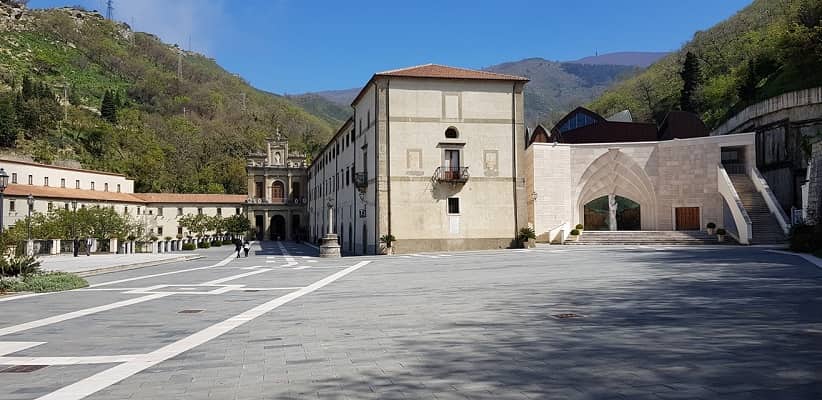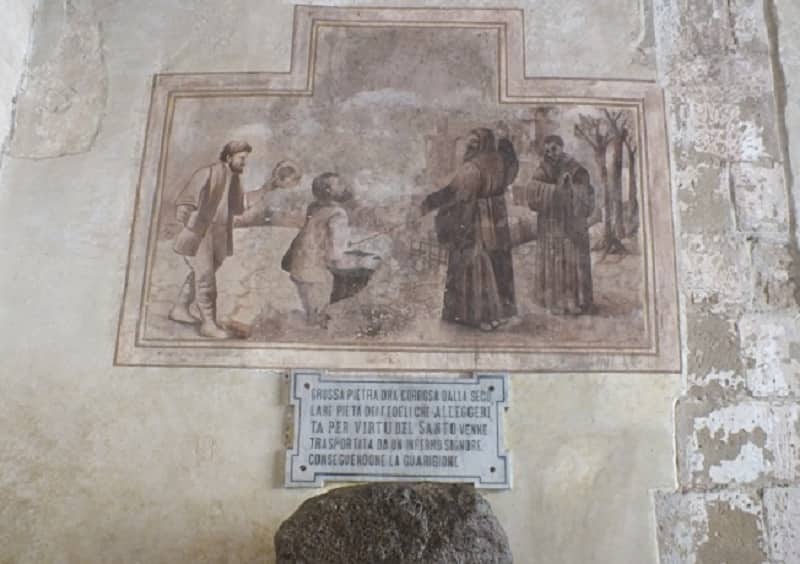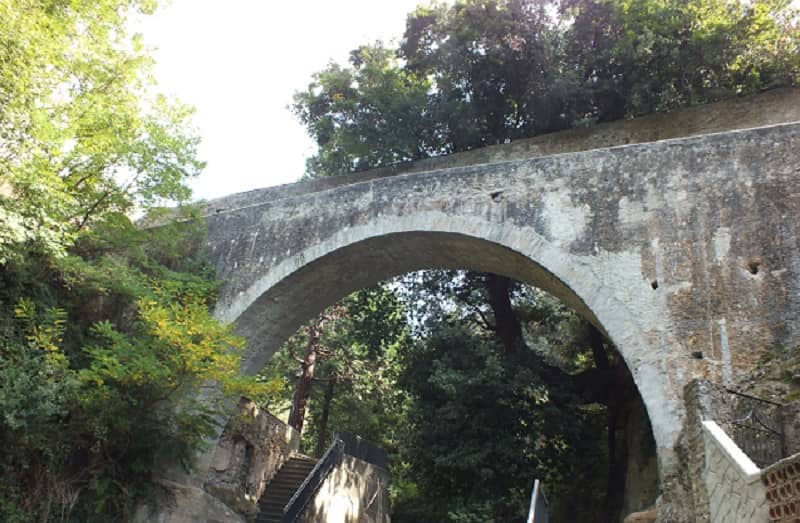Who has nothing, has all goods.
The Patron Saint of Calabria
The patron saint of Calabria and the people of the sea was born in Paola, where his remains are kept and a lot of miracles have been performed here. The visit to the sanctuary is an immersion in nature and in the mystical world, an ideal destination for those who love to live unique experiences. The religious complex is a destination for pilgrims from all over the world and it is not difficult to find out why once they arrive at their destination.
The welcome to the pilgrims

A large square welcomes travelers, where you can admire the New Basilica (built in 2000) and at the bottom the Old Basilica, dating back to the 15th century. The facade of the convent is 24 meters high and was made entirely of local stone.The New Basilica, designed by the architect Sandro Benedetti, is a riot of colors thanks to the presence of mosaics representing scenes from the life of Jesus Christ and the colorful bronze portal created by Paolo Borghi, narrates through images the most significant episodes in the life of Saint Francis.
The path of miracles

The spiritual experience par excellence is the path of miracles, a walk within the area of the Sanctuary that narrates through some symbolic objects, the most significant feats of the Patron Saint of Calabria.The way of miracles winds from the entrance of the old basilica, up to the bridge of the Isca river.The first symbol of the saint's prodigiousness is the boulder, a stone that for centuries has been the object of devotion by pilgrims: it is said that it was transported from the sea to the doors of the church by a sick man and as he approached his destination, the stone became lighter and his diseased leg was completely healed. Continuing on the walk, we meet the Fornace, a place where two miracles took place: he brought back to life the little lamb Martinello, eaten by the hungry workers who were working on the construction of the convent, it is also said that the Saint entered into the furnace that was yielding to repair it, leaving it unscathed. A little further on, the suggestive Fonte of Cucchiarella tells the miracle of the creation of a source of water from nothing, whose level has always remained the same for centuries. The prodigious waters of this source also brought back to life a trout, known as Antonella.
The Bomd and the Devil's Bridge

The emotions continue in this magical place, in fact it is possible to admire a bomb from the Second World War that in 1943 fell into the Isca stream but did not explode, a sign of the intervention of the patron saint. The Miracle Stones are also surprising, two huge stones that were about to fall during the construction of the church, but they were blocked by the will of the Saint and still remain inexplicably balanced today. The last stage of this mystical journey is represented by the Devil's Bridge, a viaduct built by the evil one, on the orders of the Saint. Here you can still see the signs of a clash between the two, a struggle between good and evil, in fact you can recognize a hole on the left side and a handprint on the right wall. Passing over this stone bridge you can perceive all the mystical power of this place surrounded by greenery, you can hear the impetuous roar of the river and around a nature of uncontaminated beauty, between scents and noises that tell incredible and exciting stories.
The Sanctuary of Paola represents the spiritual face of Calabria, a place that attracts not only pilgrims, but also people who love the peace of unspoiled nature and who only here find their inner balance, between symbols of apparently inexplicable events and the shock of water from the Isca river, symbol of life and its continuous renewal.
About the author
Written on 15/02/2021



Debora Calomino
Calabria is a land where spirituality and nature often merge, giving life to places of extraordinary beauty. In Paola, near Cosenza, a seaside town, the Sanctuary of San Francesco is a stop not to be missed when you visit Calabria.